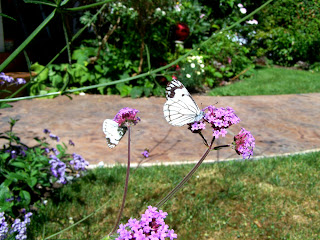Most rabbits live safe lives inside rabbit hutches. They might be bored, but they definitely don't have to compete for food. Our rabbit, on the other hand, lives a free life. He is able to come and go into his hutch at will, and has a large yard to hop around. The downside is that he shares his life with goats who are obsessed with eating his food.
We had refurbished his old hutch (time and again...) to be as goat-proof as possible; but even still, with four masters of destruction (the goats) working away on the hutch, it was falling apart. When the roof nearly collapsed, replacing the rabbit hutch moved to the top of our list. Brian and Sophie used the last few days of summer to design and build a goat-proof rabbit hutch--not necessarily something most rabbit owners need to consider!
So what does a goat-proof rabbit hutch look like? A completely enclosed home with hidden access. The goats are totally locked out. The rabbit door is actually a hole in the floor of the hutch that he comes up through. And it took nearly 8 hours for Parsley's pea-sized brain to figure out how to do this. We used treat lures, a ramp, and even picked him up and put him inside to show him the "door" in the floor of his new home.
He is quite pleased with himself now. He is able to eat his food in peace, while the goats look longingly through the wire mesh, unable to find a way to his food. And we are able to fill his food dish through a latched opening in the top of the hutch. So far, the new hutch has confounded the goats.
Perhaps the best upside to the new hutch is that it is lower to the ground, and little Sweet Pea (the African Pygmy) finally has a perch that she can jump onto. Her short little legs have kept her from being able to access the high places our other goats love, and it's nice to see her have a little accomplishment in her life.
 |
| Sweet Pea--our tiny African pygmy goat |














